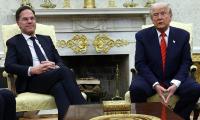When the entire world is in the precarious grip of Covid-19, the two big economic powers US and China have hit the headlines, making an interesting study of their individual and global response in tackling the virus and the ensuing impact on their economies and trade relations.
China had been, undoubtedly, at the epicenter of today’s big problem. The virus led a fatal blow to the Chinese economy before spiraling across the borders shaking the foundations of Europe and ushering a living nightmare for the US.
If beans were spilled by China, it deserves appreciation for combating the virus effectively through successful containment and isolation measures which limited the casualties, before eventually easing the lockdown for public and industry. The US, on the other hand, is criticized for its delayed response in assessing the catastrophe, buttressed by lack of medical preparedness, before the death toll escalated to above 50,000, overtaking China in numbers of deaths and infections, heightening tension between the states and the federal government.
While the US was battling on its home turf, crippled by the virus, President Trump was faltering in his response domestically and unwilling to organize international efforts to fight the disease. Taking no remorse in defunding the WHO at a critical time and embarrassingly failing in providing an international response, it offered China to step into the empty space to reposition itself as the alternate global leader. China not only assumed the role of a benevolent saviour, it also acted as a big creditor willing to suspend bilateral loan payments to poor countries. For years, China had been building its political and economic clout in Europe, Asia and Africa through its Belt and Road global infrastructure projects, and today it is embarking to build a unique ‘health silk road’ in its bid to earn more potential political rewards.
The two largest economies have been the hardest economic casualty of the virus. The GDP of China shrank by 6.1 percent in the first quarter, the lowest in three decades whereas US GDP declined by 4.8 percent in the first quarter, the sharpest since the 2008 financial crisis. This upheaval augurs a big blow to industrial production, shuddering retail sales, massive unemployment, huge trade deficit and decline in the hotel and tourism sector. The IMF forecasts that China will scrape through recession by bouncing back 9.2 percent GDP next year as its manufacturing facilities have opened up but the road to recovery for the US economy will be long and painful.
In order to pop up the beleaguered economy, the Federal Reserve of the US announced a $2.3 trillion credit for household and business and the Central Bank of China pumped $200bn for its market. Domestic measures like increased credit will have limited effect as the rest of the world is in recession. The pandemic has sharply cut the world’s appetite for Chinese goods and global demand for US exports is weakening. Economic recovery of these two big economies depends on other parts of the world when demand for consumer goods picks up.
Another economic casualty of the virus is the US-China trade deal. The US ran a trade deficit with China and the objective of the deal was to readjust trade balance between both countries. Phase 1 of the deal, brokered in January this year, marked a truce to the two-year long tariff war and envisaged China to buy $200 billion worth of US energy and agricultural goods to help reduce the trade deficit of the US.
With the spread of the coronavirus, Chinese imports have consistently plunged to almost 14.2 percent in April, posing a big question on whether the country will be able to fulfill its ambitious commitments when business activity is teetering and consumer demand is depressed. The pandemic has disrupted supply and demand on both sides, highlighting the risks around the survival of the trade deal.
Covid-19 may have contained the tariff war and somewhat reduced the trade deficit of the US but tensions have spilled in many other areas, accentuating the political differences between the adversaries. It seemed like a China-US battleground with daggers drawn on both sides, each side blaming the other for the origin of the deadly virus.
The US has accused China of covering up the outbreak, demanding for a full-fledged investigation, and accusing the WHO of pushing China’s misinformation on the virus. The spat took an ugly form, resulting in journalists being expelled from both countries. This has damaged global efforts towards collaboration in defeating the disease.
The writer holds an LLM degree in international economic law from the University of Warwick.
Email: beelam_ramzan@yahoo.com
People of that time believed that an eclipse was a symbol of displeasure of gods
Vertically speaking, dominance of domestic debt in Pakistan’s debt portfolio is haunting
Loss of biodiversity is stark reminder that urban mismanagement is not just infrastructural failure but ecological...
Strong public warning systems can also help ensure quick evacuations in places prone to fires
PPPs in Pakistan's WASH sector face significant regulatory and policy challenges that hinder their effectiveness
Instead, it would have powerful chairman with three-year term, appointed at prime minister’s discretion







